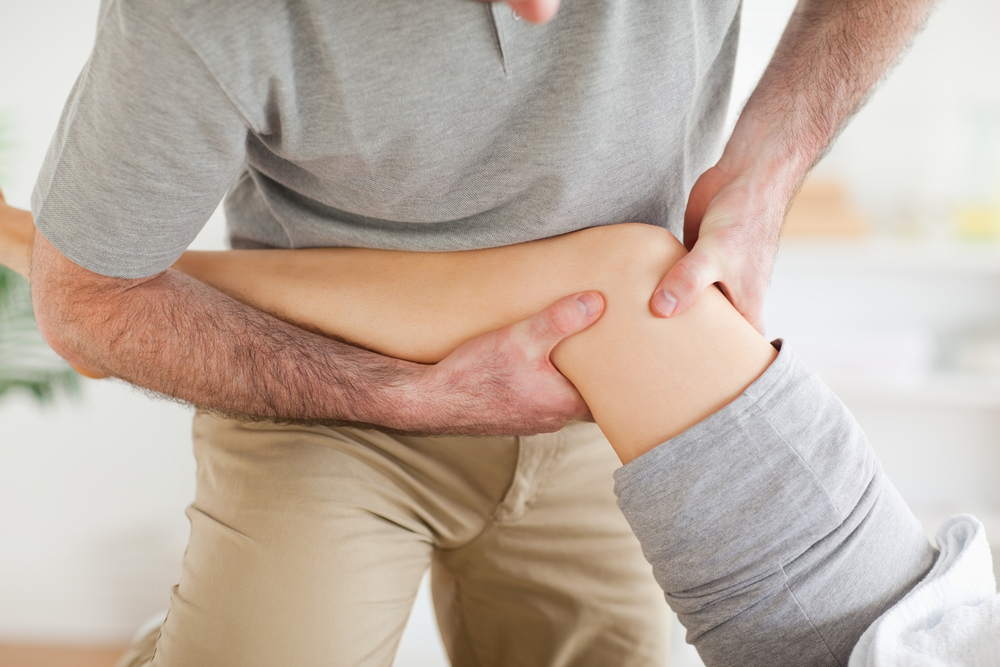“Health is a state of body. Wellness is a state of being.” – J. Stanford
 For those new to manual therapy and the various techniques used to both treat and relieve chronic pain, it may seem a bit confusing. In fact, at first glance, it may seem that there are competing techniques and therapies being offered. While this may appear to be the case, the truth is a bit more complex.
For those new to manual therapy and the various techniques used to both treat and relieve chronic pain, it may seem a bit confusing. In fact, at first glance, it may seem that there are competing techniques and therapies being offered. While this may appear to be the case, the truth is a bit more complex.
Active Release Technique and Physical Therapy
One of the most common practices that most people are either somewhat familiar with, or have gone through themselves, is physical therapy. At Pain and Performance Solutions we encourage our patients to consider traditional physical therapy, especially when recommended by their primary health care provider.
However, there are additional therapies that either enhance or complement more traditional physical therapy modalities, including Active Release Techniques®
First, though, let’s look at standard physical therapy:
- Traditional physical therapy is an allied health profession that employs kinesiology, manual therapy, exercise therapy, and electrotherapy to prevent and treat injury and loss of mobility.
- In addition to these techniques, also known as “passive modalities”, physical therapy also utilizes ice, heat, traction, ultrasounds, and even low-level laser therapy.
- Physical therapists are highly trained and licensed practitioners. Generally, they practice in hospitals, senior care facilities, sports rehabilitation clinics, and orthopedic care facilities.
- Most post-surgical rehabilitation regimens will include physical therapy.
- The goal of physical therapy is to maintain, restore and improve movement while offering relief from pain without the use of pain medications.
- Because physical therapy is an evidence-based practice, the therapies and modalities utilized by physical therapists are supported by well-documented and reproducible research studies.
Now let’s consider the features and characteristics of Active Release Techniques®, or ART®. Keep in mind that, although it is often used as an inclusive therapy by physical therapists in conjunction with other modalities, it is a separate and patented therapy:
- ART® was developed by Dr. Michael Leahy, a former aeronautical engineer, in the early 1980s. Dr. Leahy is now a Doctor of Chiropractic and he patented his Active Release Techniques® in 2001.
- Full Body Certified ART® Providers must pass Upper Extremity, Lower Extremity, and Spine courses, and unique protocols for over 300 different muscles, ligaments, and tendons. Re-certification is required on an ongoing basis.
- Active Release Techniques® is a proven, effective method of treatment for both professional and recreational athletes. While it is an effective injury treatment and prevention therapy, it can also be fully utilized within a comprehensive training or rehabilitation program.
- The restorative benefits of Active Release Techniques® can be an invaluable part of athletic training for any athlete or physically active person.
- Using ART® to help prevent dysfunctional changes in soft tissue, athletes and others can train and function at a higher level.
Active Release Techniques® website has this to say concerning the treatment benefits of ART®:
“ART® is a patented, state of the art soft tissue system/movement-based massage Techniques that treats problems with muscles, tendons, ligaments, fascia and nerves. Headaches, back pain, carpal tunnel syndrome, shin splints, shoulder pain, sciatica, plantar fasciitis, knee problems, and tennis elbow are just a few of the many conditions that can be resolved quickly and permanently with ART. These conditions all have one important thing in common: they are often a result of overused muscles.”
The Benefits of ART®
Active Release Technique® offers much more than just treatment for injuries, pain and limited mobility. We can use ART® therapies to help prevent injuries, especially in active athletes, and evidence is growing that show how it can help improve athletic performance and reduce recovery time from injuries.
Many professional athletes, celebrities, and others use Active Release Techniques® to maintain their flexibility and motion and to help prevent repetitive stress injuries. Much like other physical therapy modalities, incorporating ART® into a regular training program can help athletes and others both control and minimize wear and tear on their hip, shoulder and knee joints. This helps them to function better and longer while increasing the efficacy of strength training and stretching regimens.
Active Release Techniques® is specifically designed to treat scar-tissue adhesions in the muscles and surrounding soft tissues. By locating and treating these soft-tissue adhesions, ART® can be used to break up restrictive scar-tissue that overstress the joints, tendons and ligaments, and restore tissue flexibility and movement. It is highly effective for many types of joint pain and can greatly reduce the risk of acute injury and muscular imbalance from chronic, overuse injuries.
Ultimately, ART® can increase flexibility, allowing athletes and others to push further with their strength training and stretching. And, by improving glide and movement between muscles and surrounding structures, ART® can increase strength, speed, and range of motion while developing more balanced body mechanics.
Physical Therapy With ART® at Pain and Performance Solutions
When you come to your first appointment, we will endeavor to learn everything we can about your present discomfort as well as any history of pain. Achieving complete pain relief with ART® begins with an understanding of when and how your pain started. A full examination will help us determine which form of treatment is best suited to get you on your road to recovery.
Your openness and honesty are important, as is your trust in us. Ultimately, getting your body healthy and working properly is the only way to achieve total recovery.
So, don’t hesitate to reach out. We are here to help and will answer any questions that you may have. You can reach us at (707) 636-4404 or by filling out our online contact form